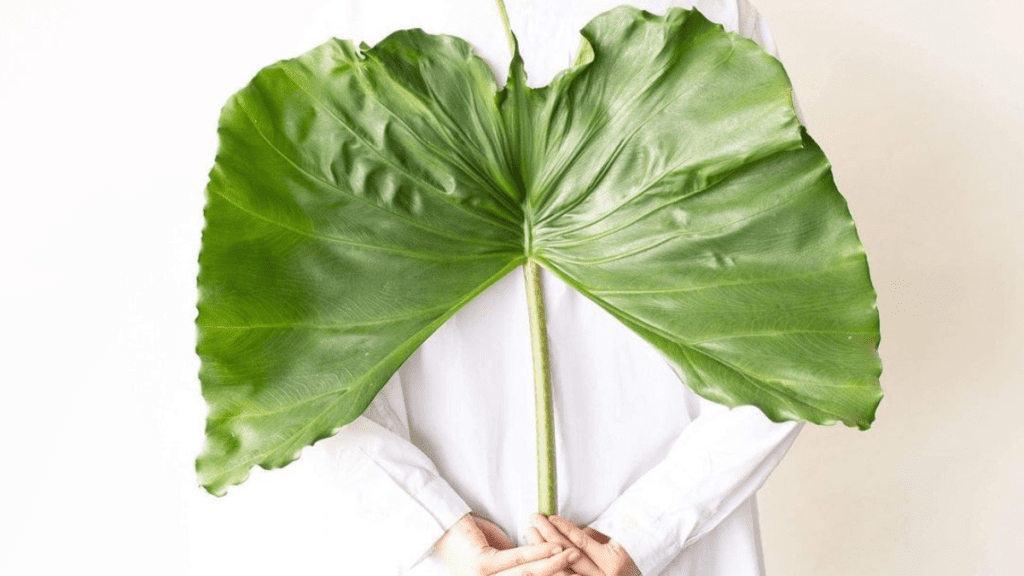Welcome to the captivating world of Alocasia Polly! If you’re searching for a plant that adds a touch of exotic allure to your indoor space, look no further than this stunning botanical gem. With its striking foliage and graceful presence, Alocasia Polly is sure to steal the spotlight in any room.
Alocasia Polly, also known as African Mask or Elephant Ear, is a member of the Araceae family, hailing from the tropical regions of Southeast Asia. What sets this plant apart is its mesmerizing appearance, characterized by bold, arrow-shaped leaves adorned with contrasting veins that create an intricate tapestry of colors and patterns. The glossy foliage boasts hues of deep green with highlights of ivory or silver, adding a touch of sophistication to its overall aesthetic.
This botanical beauty can reach impressive heights, with mature specimens boasting leaves that can span up to two feet in length. Whether displayed as a standalone statement piece or grouped with other plants to create a lush jungle oasis, Alocasia Polly is sure to command attention with its undeniable charm and presence.
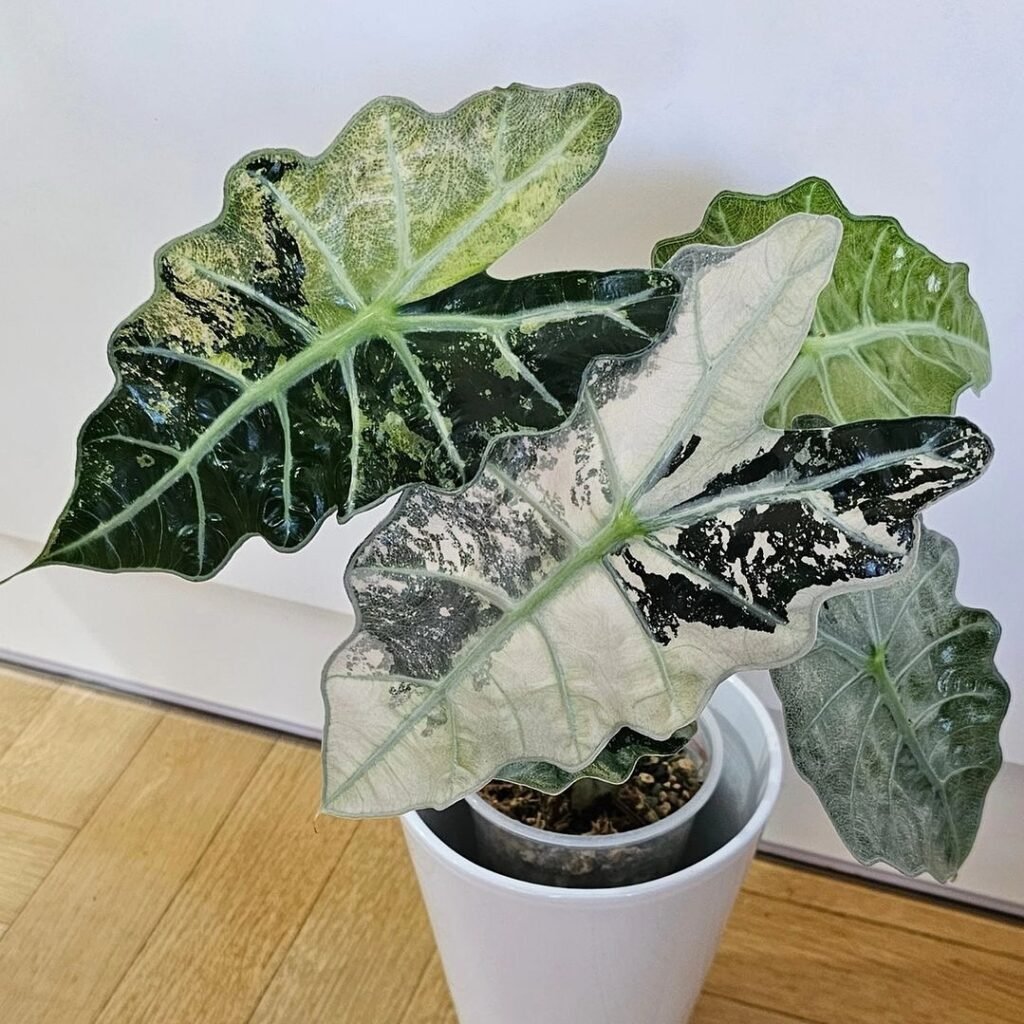
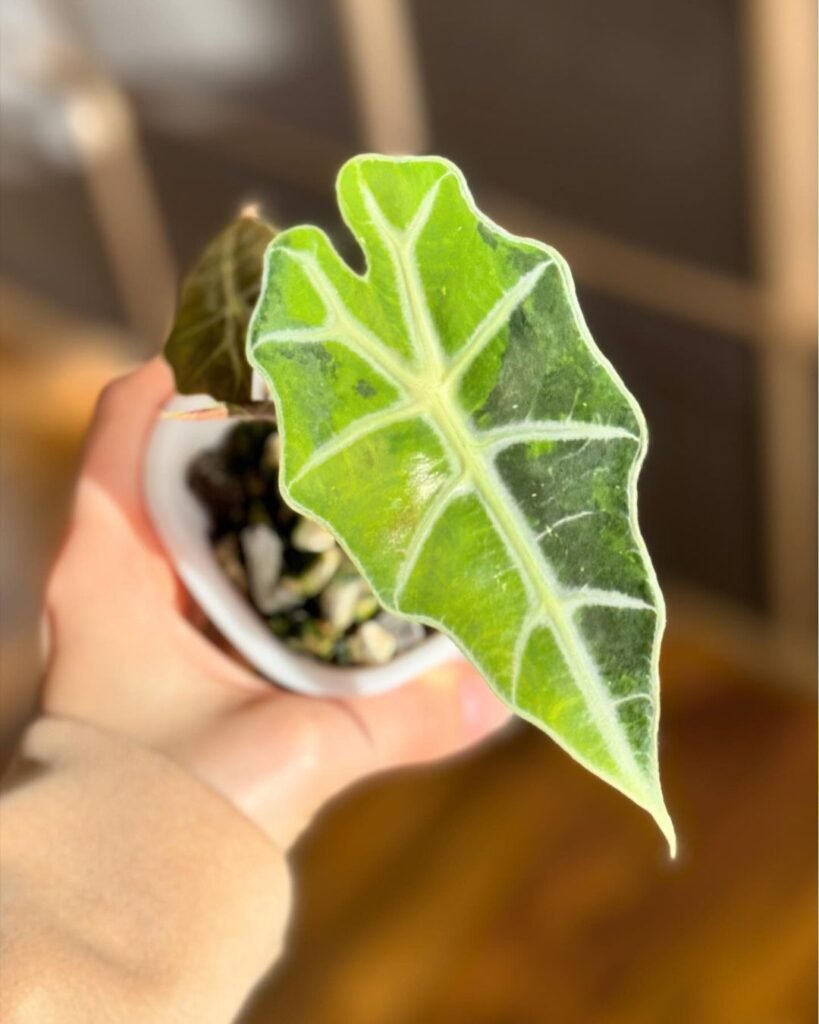
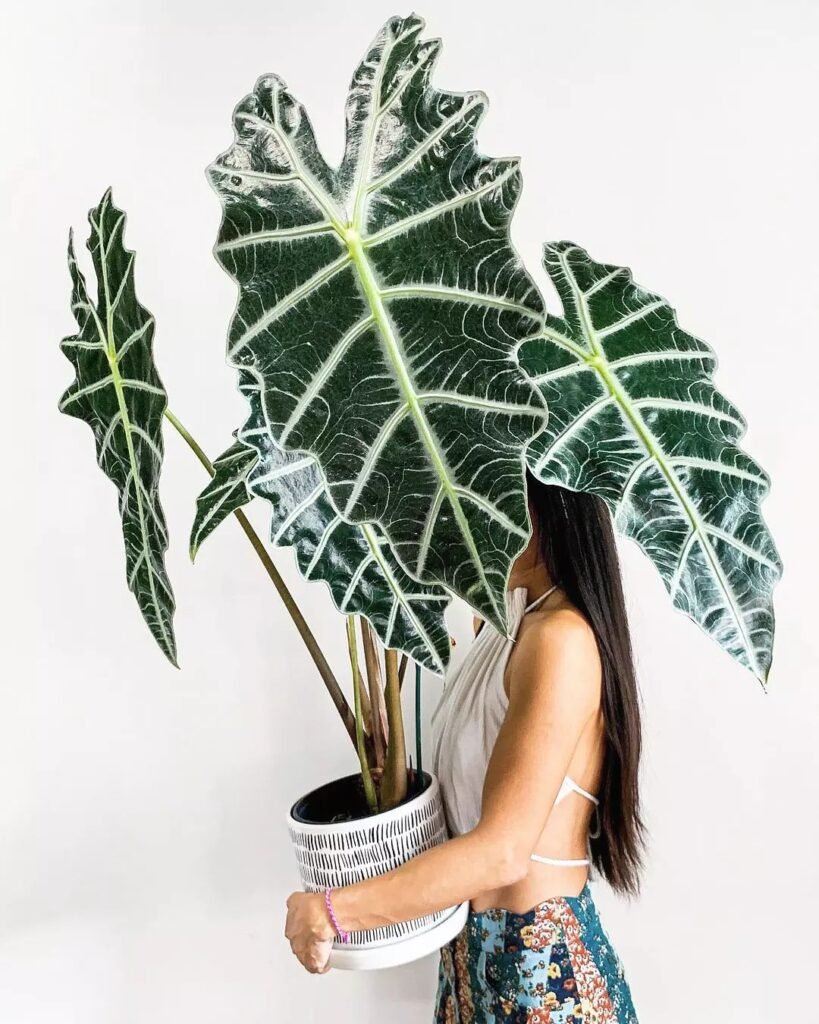
Alocasia Polly’s Needs
Now that we’ve acquainted ourselves with the captivating allure of Alocasia Polly, it’s time to delve deeper into understanding the plant’s unique requirements. Like any botanical beauty, Alocasia Polly has specific needs that must be met to ensure its health and vitality.
Light Requirements
Light serves as a vital source of energy for plants, fueling the process of photosynthesis that enables them to thrive and grow. When it comes to Alocasia Polly, striking the right balance of light is crucial for optimal health. While this plant appreciates bright, indirect sunlight, it’s essential to shield it from harsh, direct rays that can scorch its delicate foliage. Position your Alocasia Polly near a window where it can bask in filtered sunlight, or consider supplementing with artificial grow lights to provide adequate illumination.
Watering Tips
Water is the elixir of life for plants, and Alocasia Polly is no exception. Maintaining proper hydration levels is key to keeping your plant happy and healthy. However, it’s essential to strike a balance and avoid overwatering, which can lead to root rot and other issues. Allow the top inch of soil to dry out between waterings, then thoroughly saturate the soil until water drains freely from the bottom of the pot. During the growing season, typically spring and summer, Alocasia Polly may require more frequent watering, while in the dormant season, reduce watering frequency to prevent waterlogged soil.
Humidity Preferences
Hailing from the lush jungles of Southeast Asia, humidity is a non-negotiable requirement for Alocasia Polly’s well-being. In our homes, where humidity levels may fluctuate, it’s essential to create a humid microclimate to mimic its native environment. You can achieve this by misting the foliage regularly, placing a humidity tray filled with water and pebbles beneath the plant, or investing in a room humidifier. Maintaining humidity levels of around 60% or higher will help prevent the dreaded browning of leaf edges and keep your Alocasia Polly thriving.
Soil Requirements
The foundation of a healthy plant starts with the soil it calls home. For Alocasia Polly, a well-draining, nutrient-rich soil mixture is paramount to its success. Opt for a peat-based potting mix amended with perlite or sand to ensure adequate drainage and aeration. Avoid heavy, compacted soils that retain moisture, as they can lead to root suffocation and fungal issues. Regularly inspect the soil moisture levels and repot your Alocasia Polly every couple of years to refresh the soil and prevent it from becoming compacted.
Nurturing Your Alocasia Polly
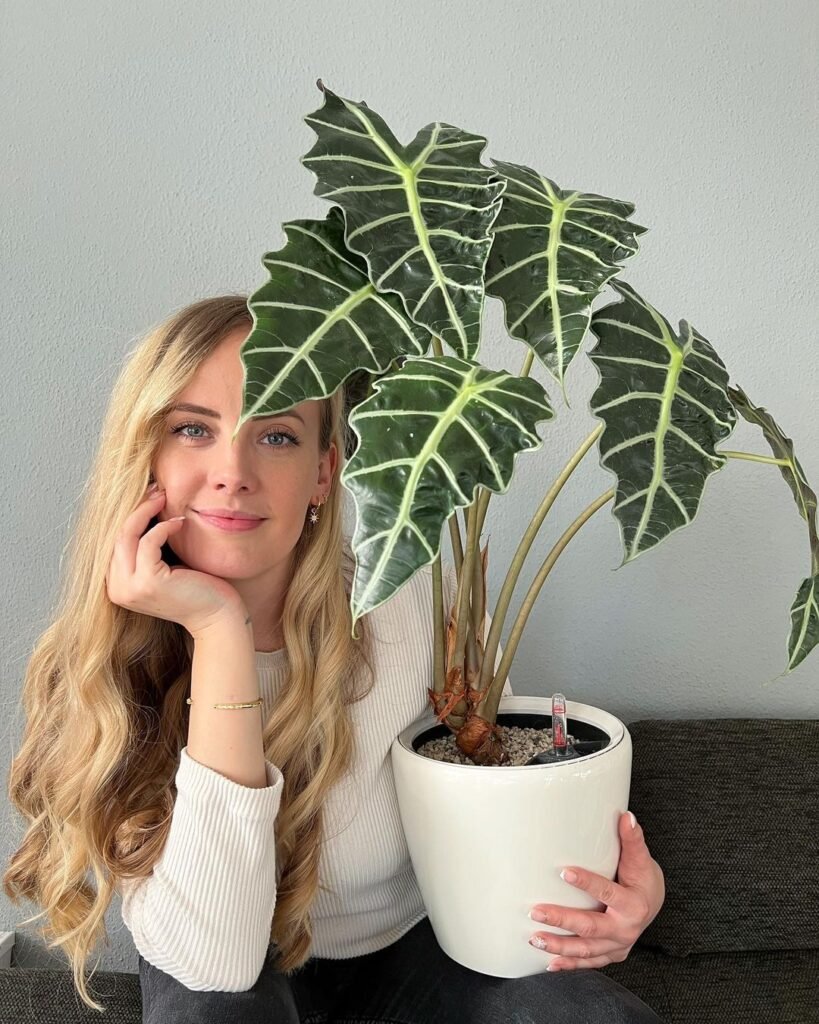
Now that we’ve uncovered the essential requirements of Alocasia Polly, it’s time to dive into the art of nurturing this botanical beauty. With a little tender loving care, your Alocasia Polly will thrive and flourish, becoming the star attraction of your indoor jungle.
Temperature Considerations
Temperature plays a crucial role in the well-being of Alocasia Polly, as it thrives in warm and humid conditions reminiscent of its native habitat. Aim to maintain temperatures between 65°F to 80°F (18°C to 27°C) year-round, avoiding sudden fluctuations or drafts that can stress the plant. During the colder months, protect your Alocasia Polly from chilly drafts and ensure it’s positioned away from heaters or vents that can cause drying out of the foliage.
Fertilizing Guidelines
To fuel the lush growth of your Alocasia Polly, fertilizing is essential during the growing season. Opt for a balanced, water-soluble fertilizer formulated for tropical plants, diluted to half strength, and apply every two to four weeks. Be mindful not to over-fertilize, as excessive nutrients can lead to fertilizer burn and damage the plant’s delicate roots. During the dormant season, withhold fertilization to allow the plant to rest and conserve its energy.
Pruning and Grooming
Regular pruning and grooming are key to keeping your Alocasia Polly looking its best and promoting healthy growth. Remove any yellowing or damaged leaves promptly to prevent the spread of disease and maintain the plant’s aesthetic appeal. Additionally, periodically wipe down the foliage with a damp cloth to remove dust and debris, allowing the leaves to photosynthesize efficiently.
Pest and Disease Management
While Alocasia Polly is relatively resilient, it may occasionally encounter pests and diseases that can hinder its growth. Keep a vigilant eye out for common pests such as spider mites, aphids, and mealybugs, especially in warm and dry environments. If detected, treat the infestation promptly with natural remedies or insecticidal soap to prevent further damage. Additionally, ensure proper air circulation and avoid overcrowding plants to minimize the risk of fungal diseases such as powdery mildew or root rot.
Propagation Tips

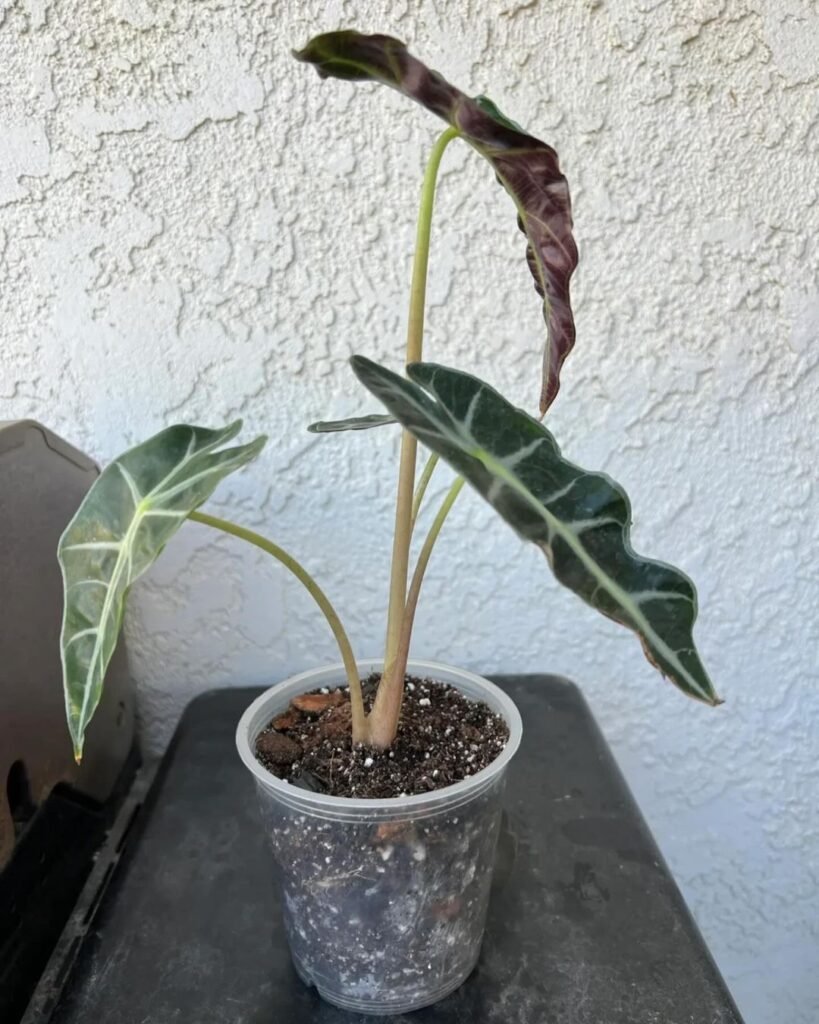
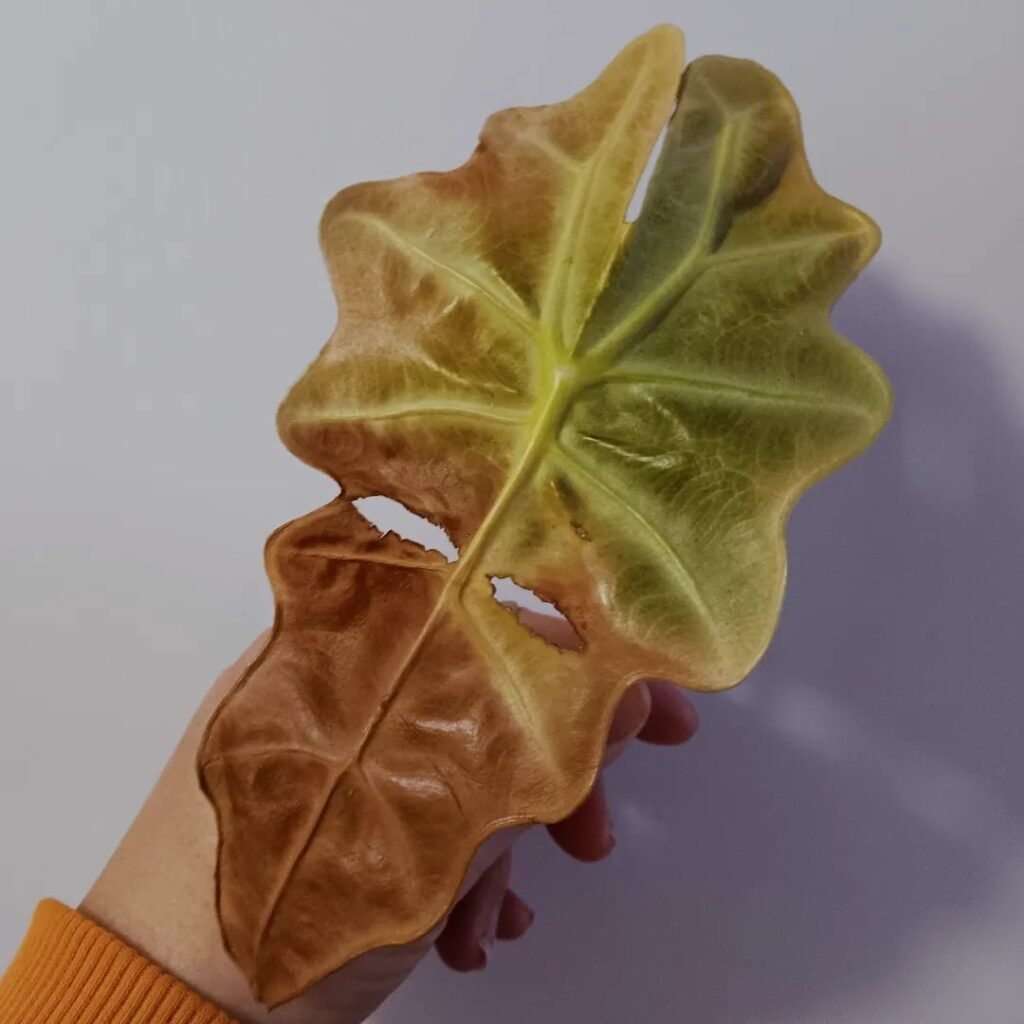
Embarking on the journey of propagating your Alocasia Polly opens up a world of possibilities, allowing you to expand your collection or share the joy of this exquisite plant with friends and fellow enthusiasts. While propagation may seem daunting at first, with the right techniques and a bit of patience, you’ll soon be rewarded with new offspring to nurture and cherish.
Propagation Methods
There are several methods you can employ to propagate your Alocasia Polly, including division, stem cuttings, and rhizome division. Division involves separating the plant into smaller sections, each with its own roots and stems. Stem cuttings involve taking a portion of the stem with at least one node and rooting it in water or soil. Rhizome division entails dividing the underground rhizomes, ensuring each division has viable roots and shoots.
Propagation Steps
To propagate your Alocasia Polly through division, begin by carefully removing the plant from its pot and gently teasing apart the roots to expose the rhizomes. Using a clean, sharp knife or shears, divide the plant into smaller sections, ensuring each division has at least one healthy stem and a portion of the rhizome. Plant each division in a separate pot filled with well-draining soil, and water thoroughly to settle the roots.
Care Tip: When propagating Alocasia Polly, patience is indeed a virtue. While it’s tempting to expect immediate results, remember that propagation is a gradual process that requires time and care. Be patient and provide consistent moisture and warmth to encourage root development and new growth. With patience and perseverance, you’ll soon witness the fruits of your labor as new shoots emerge and your propagated Alocasia Polly flourishes.
Elevating Your Space
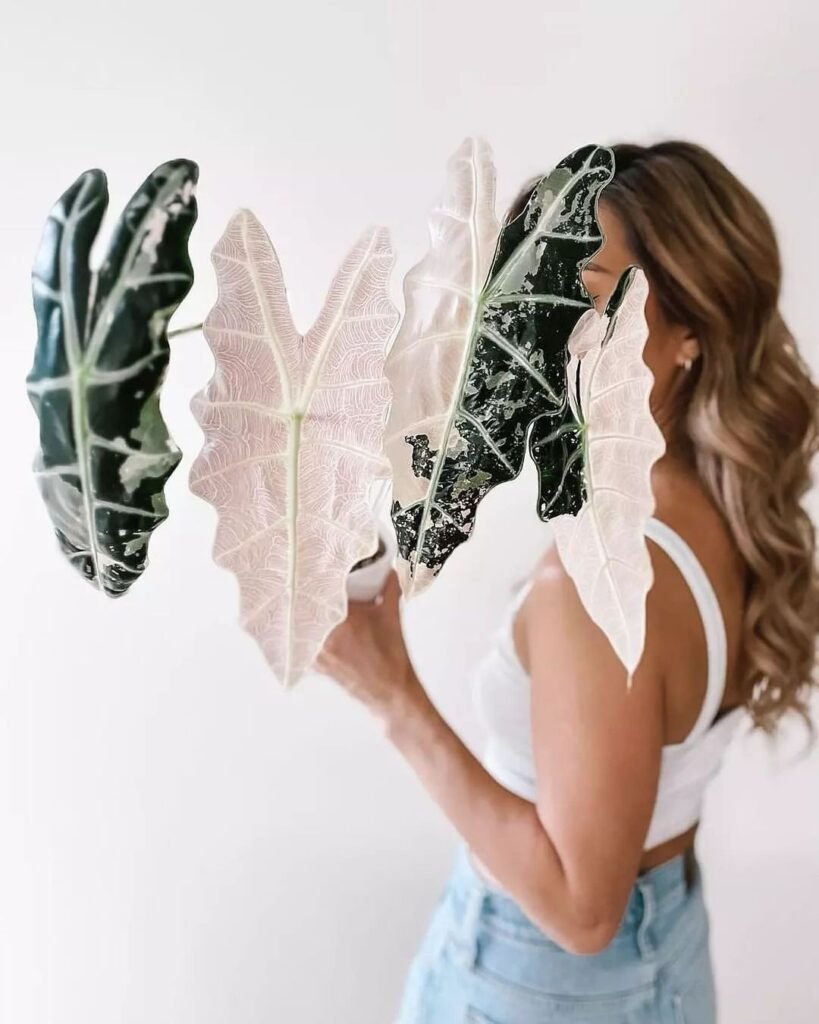
Transforming your living space into a lush oasis of greenery is made effortless with the addition of Alocasia Polly. This botanical beauty not only enhances the visual appeal of any room but also infuses it with a sense of tranquility and natural elegance. Whether you’re a seasoned plant parent or a novice enthusiast, incorporating Alocasia Polly into your decor scheme is sure to elevate your space to new heights of botanical splendor.
Creative Display Ideas
When it comes to showcasing your Alocasia Polly, the possibilities are endless. Experiment with creative display ideas to highlight its unique beauty and make a striking statement in your home. Place your Alocasia Polly on a prominent tabletop or plant stand to draw attention to its stunning foliage, or elevate it to new heights by hanging it from the ceiling in a decorative macramé planter. For added visual interest, group multiple Alocasia Polly plants together to create a captivating display that commands attention.
Complementary Plants and Containers
To enhance the visual impact of your Alocasia Polly, consider pairing it with complementary plants and containers that accentuate its beauty. Choose plants with contrasting textures and colors, such as trailing vines or variegated specimens, to create an eye-catching arrangement that adds depth and dimension to your space. When selecting containers, opt for vessels that complement Alocasia Polly’s aesthetic, such as sleek ceramic pots or rustic woven baskets, to create a cohesive and harmonious look.
Care Tip: While Alocasia Polly thrives in warm and humid conditions, it’s essential to be mindful of temperature fluctuations in your home environment. Avoid placing your Alocasia Polly near drafty windows or vents, as sudden changes in temperature can stress the plant and negatively impact its growth. Instead, position your Alocasia Polly in a stable environment with consistent temperatures to ensure its health and vitality. By maintaining optimal temperature conditions, you’ll create the perfect setting for your Alocasia Polly to flourish and thrive.
Troubleshooting Common Issues
While Alocasia Polly is a resilient plant, it may encounter occasional challenges that require your attention and care. By familiarizing yourself with common issues and their remedies, you can effectively address any concerns that arise and ensure the continued health and well-being of your beloved botanical companion.
Yellowing Leaves
One common issue that Alocasia Polly may face is yellowing leaves, which can indicate a variety of underlying problems. Overwatering, underwatering, inadequate lighting, or nutrient deficiencies may all contribute to leaf yellowing. To remedy this issue, assess the plant’s watering regimen, adjust lighting conditions if necessary, and consider fertilizing with a balanced, water-soluble fertilizer to replenish any missing nutrients.
Leaf Browning or Curling
Leaf browning or curling is another potential concern for Alocasia Polly, often attributed to inadequate humidity levels or exposure to dry air. To address this issue, increase humidity around the plant by misting the foliage regularly, placing a humidity tray nearby, or utilizing a room humidifier. Additionally, ensure proper watering practices to maintain consistent soil moisture levels and prevent dehydration of the leaves.
Pest Infestations
Like any houseplant, Alocasia Polly may fall victim to pest infestations, including spider mites, aphids, and mealybugs. These pests can wreak havoc on the plant’s foliage, causing discoloration, distortion, and stunted growth. To combat pest infestations, inspect your Alocasia Polly regularly for signs of pests, and treat affected areas promptly with natural remedies or insecticidal soap. Additionally, isolate infested plants to prevent the spread of pests to other nearby plants.
Care Tip: Regularly monitoring environmental conditions in your home is essential for preventing and addressing common issues with Alocasia Polly. Keep an eye on factors such as temperature, humidity, and lighting levels, and make adjustments as needed to create an optimal growing environment for your plant. By staying vigilant and proactive, you can nip potential problems in the bud and ensure that your Alocasia Polly remains healthy and thriving for years to come.
A Personal Favorite
For plant enthusiasts like myself, Alocasia Polly holds a special place in our hearts and home gardens. Its captivating beauty and graceful demeanor never fail to uplift the spirits and bring a touch of the exotic into our lives. As a seasoned plant parent and avid collector, I’ve had the pleasure of nurturing Alocasia Polly and witnessing its growth firsthand, and it’s truly been a rewarding experience.
From the moment I first laid eyes on Alocasia Polly’s stunning foliage and intricate leaf patterns, I was smitten. Its vibrant hues and striking silhouette added a dynamic element to my indoor jungle, instantly becoming the focal point of my plant collection. Watching as new leaves unfurled and matured, each one more magnificent than the last, filled me with a sense of wonder and awe.
But beyond its visual appeal, Alocasia Polly has also taught me valuable lessons in patience, resilience, and the beauty of nature’s cyclical rhythms. Through periods of growth and dormancy, triumphs and challenges, my bond with Alocasia Polly has deepened, fostering a sense of connection and kinship that transcends mere caretaker and plant.
As I continue to nurture and care for my Alocasia Polly, I’m reminded of the profound joy and fulfillment that comes from cultivating a living, breathing masterpiece. Its presence brings a sense of serenity and balance to my home, serving as a constant reminder of the beauty and wonder that surrounds us in the natural world.
If you’re thinking of extending your alocasia family, I recommend reading up on alocasia odora and alocasia frydek. They would both make great additions to your squad!
Conclusion
By embracing Alocasia Polly into your home and heart, you’re not only adding a touch of natural beauty to your surroundings but also inviting joy, serenity, and connection into your life. As you embark on your journey of nurturing and caring for Alocasia Polly, remember to approach it with patience, love, and a sense of wonder. Each leaf unfurling, each new growth emerging, is a testament to the magic of nature’s creation and the joy of tending to a living masterpiece.
So, whether you’re a seasoned plant enthusiast or a novice gardener taking your first steps into the world of indoor greenery, I encourage you to welcome Alocasia Polly into your home and experience the transformative power of its beauty. May your journey be filled with growth, discovery, and endless moments of botanical bliss. Here’s to cultivating beauty and joy with Alocasia Polly, one leaf at a time.
FAQs
How often should I water my Alocasia Polly?
Watering frequency for Alocasia Polly depends on various factors such as environmental conditions, pot size, and soil moisture levels. Generally, it’s recommended to water your Alocasia Polly when the top inch of soil feels dry to the touch. Ensure thorough watering, allowing water to drain freely from the bottom of the pot, but avoid overwatering, which can lead to root rot.
Why are the leaves of my Alocasia Polly turning yellow?
Yellowing leaves on Alocasia Polly can be a sign of various issues, including overwatering, underwatering, insufficient light, or nutrient deficiencies. Evaluate your plant’s care routine, adjusting watering practices, providing adequate light, and fertilizing as needed to address the underlying cause. Remove any yellowed leaves promptly to prevent the spread of issues to healthy foliage.
How can I increase humidity for my Alocasia Polly?
Humidity is crucial for the health and well-being of Alocasia Polly, mimicking its native tropical habitat. To increase humidity levels, consider misting the foliage regularly, placing a humidity tray filled with water and pebbles beneath the plant, or using a room humidifier. Grouping plants together can also create a microclimate of increased humidity.
Is Alocasia Polly safe for pets?
While Alocasia Polly is prized for its beauty, it’s important to note that the plant contains compounds that can be toxic to pets if ingested. Keep Alocasia Polly out of reach of curious pets and monitor them closely to prevent accidental ingestion. If you suspect your pet has consumed any part of the plant, seek veterinary assistance immediately.

Writer/Green Thumb/Explorer – Rooted deep in the rich soils of Devon, I’ve cultivated a vast expertise in plant care, helping greenery thrive in homes across the UK. When I’m not crafting detailed plant care guides, I’m journeying through the lush landscapes of the West Country, unearthing nature’s secrets and sharing them with fellow plant enthusiasts. Every leaf has a story, and I’m here to tell it.




